Before I get into the iFi nano iUSB3.0 review, I think it’s important to give purpose to our quest…
Why do I need a USB conditioner?
Short answer: Chances are your equipment generates a certain level of unwanted electrical noise and this causes bits to be mistimed on arrival at the D/A converter. EMI/RFI might also cause similar problems.
Long answer: This mistiming is called jitter. Coming from a computer engineering background to the island of audiophiles, there was a paradigm shift in the way I approached technologies in digital audio. When analog waveforms have to be reconstructed from bits, it’s no longer just about 0’s and 1’s but the timing of those bits and the presence of radio frequency and electromagnetic interference in the audio chain. This clock signal could be affected by numerous factors, including power supply, cables, mechanical vibration, master clock, temperature, etc. This consequently results in a bit of fatigue and a lack of harmony and coherence in the resulting music we hear from our gear. Admittedly, most won’t notice these effects until they’ve reduced the jitter and EMI/EFI along their entire chain.
This added noise is akin to filling up a Ferrari with lower octane fuel or throwing milk & syrup into some geisha coffee. You’ll get an idea of the mechanical performance of the Ferrari and hints of the complexity of the geisha coffee but you won’t gain the full appreciation of its performance, beauty, and most importantly, artistic intent. As for digital audio, this jitter inhibits the listener from enjoying the recordings in its purest and unadulterated form.
Take for example a CD. We have 44,100 samples per second at 16 bits per sample. If those bits come in a tiny bit late or a tiny bit early, the human ear is more than capable of hearing the difference. With noise, the signal could be polluted and have bits “scrambled” or mistimed anywhere along the signal path. Its effects are additive and have an enormous impact on audio fidelity. Unlike transferring files to your USB hard drive or downloading a webpage, your D/A converter needs to be fed the bits real-time and precision and timing is of paramount importance.
The USB interface on most computer-based sources are built-for plug and play peripherals and aren’t suitable for streaming digital audio. Believe it or not, different USB ports on the same laptop could have a different sound! You’re at the mercy of the software and circuitry and how they generate the clock used by the USB interface. This interface is inherently noisy and that noise will emanate down your entire chain. Even the power supply to your laptop will affect digital audio reproduction. Now how do we reduce this noise?
From my experience, every DAC I’ve encountered benefited from a USB conditioner in the chain. Some are passive devices like the Audioquest Jitterbug and some are active like the Berkeley Audio Alpha USB. The goal of most of these devices is to eliminate jitter and to provide clean power.
Enter the iFi nano – iUSB3.0
The first time I heard about an iFi product was at a CanJam a few years back. I was waiting to demo a few JH Audio monitors and iFi just so happened to be in the adjacent booth. I thought they were some kind of Apple knockoff brand but I was thoroughly impressed with their offerings, particular their iFi stack. I stayed at the booth a bit longer than I had anticipated. I haven’t heard any of their devices ever since so when Lawrance from iFi got in touch with me, I was excited to revisit and give iFi’s line of products a proper evaluation. Enter the iFi nano – iUSB3.0.
If you want to know more about the tech specs, iFi has done a wonderful job laying them out. What caught my attention was the military-grade Active Noise Cancellation (ANC) and the noise floor of 0.5uV. Here are the other features:
- REclock/REgenerate
- The nano iUSB 3.0 re-clocks/re-generates/repeats USB audio datastream. For any and every downstream DAC, REgenerate® actually ‘regenerates’ an all-new USB signal via a precision master clock with the REclock® technology to eliminate computer jitter. Music just flows better; is cleaner, more accurate, just like the real thing.
- REbalance
- The USB signal is inherently a ‘balanced’ signal, however most USB signals become ‘unbalanced’ to some degree and contaminated by noise. By removing the DC offset and ‘re-balancing’ the USB audio signal, it is now perfectly balanced and noise-free.
- A silver bullet for USB
- Corrects impedance mis-match
- Eliminates USB jitter
- Restores signal integrity
- Corrects signal balance
- Suppresses frame noise
- Suppresses packet noise
- Ultra clean power
So this silver mini-brick claims to do what we want as far as removing noise. It supplies clean power and reclocks and regenerates the USB data. I don’t care too much about the technical details of a device because in the end, performance is the only thing that matters. Let’s get to it.
The Setup
Obviously results depend on component synergy and my results may sound different from yours. As always, my goal is to extract the holistic differences that should give readers a good idea of what to expect from a product. I tested the PSA LANRover at the same time but will include it in a separate review due to the different target market and application (it’s more aligned with a network-USB device like the microRendu).
Equipment used in review:
- Source/Amplification
- Chord DAVE – $13,000
- Kept on for 2 months
- Crossfeed 3, HF Fil ON, Phase Pos
- microRendu – $640
- Roon + Tidal
- Foobar
- (WASAPI event), exclusive access
- DSD plugin
- MSI GS40 Gaming Laptop – $1,699
- Chord DAVE – $13,000
- Power
- HFC CT-1 power cord x 2 (1.5m) – 2 x $2,375
- HFC CT-1 Ultimate power cord (1.5m) – $6,575
- HFC MC-6 Hemisphere power conditioner – $2,800
- HFC MC-0.5 x 4 – 4 x $299
- Uptone LPS-1 power supply – $395 (used with mR)
- Digital cable
- Chord SilverPlus USB cable – $100
- Networking
- SOtM dCBL-CAT6 1.5m Ethernet Cable – $199
- Asus EA-N66 – $89.99
- 5Ghz band
- WD My Net AC Wi-Fi Bridge – $150
- Headphone/Speakers
- Abyss AB-1266 – $5,495
- DHC Complement4 headphone cable – $999.99
- DHC Prion4 headphone cable – $1,799.00
- M-Audio BX5a Monitor – $299
- Abyss AB-1266 – $5,495
- USB Conditioners
- iFi iUSB3.0 nano – $199
- Stock source USB cable
- USB-A to USB-B mini adapter
- Stock power supply
- Uptone Regen – $175
- Chord Silverplus USB cable
- USB-A to USB-B mini adapter
- Stock power supply
- Wyred4Sound Recovery – $249
- Chord Silverplus USB cable
- USB-A to USB-B mini adapter
- Audioquest Jitterbug – $49
- PS Audio LANRover – $599
- SOtM dBCL-CAT6 ethernet cable
- Chord Silverplus USB cable
- Stock power supply
- iFi iUSB3.0 nano – $199
Testing Procedure
Most of the testing were immediate A/B comparisons with 30 second to 1 minute clips. I usually top off the experiment with full album/playlist listens to reaffirm micro and holistic impressions. I’ve tried a varied amount of formats and streaming services as well as local files. This experiment was done over the course of a few weeks with the proper breaks in-between to avoid fatigue. Notes were taken separately and different days to validate impressions over time (I really should date my raw notes). I’ve found this methodology to be quite effective in retrieving solid impressions.
Results
It’s amazing how all the USB conditioner offerings have their own approach to de-jittering and reducing EMI/RFI. Fundamentally, all of the devices reduced the noise emanating from the USB port of the laptop so you’ll get a noticeable improvement in your listening. On the other hand, these conditioners have their own sound signature. When I tried connecting a USB cable without a conditioner to the DAVE, I lost:
- Richness – Sounds like a bunch of corpses and worn out instruments
- Body – You lose that full and rounded sound to give the actors character and life
- Dynamics – Sounds a bit compressed
- Clarity/Resolution/Sharpness – That shimmer and shine that makes music exciting
- Soundstage – Sounds flat and narrow. Lose immersion.
The focus of this review is on the iFi nano iUSB3.0 and most of the comparisons were done against it.
The nano iUSB3.0 is an amazing device. iFi wasn’t kidding when they said it had an extremely low noise floor. It was pitch black in comparison to the rest of the cast. It was also the most detailed and most resolving conditioner of the bunch (including the PSA). It also had the most holographic sound of the bunch. It was an x-ray into the music without being too analytical. You can’t helped but to be awed by the ridiculously clean and dynamic sound this conditioner provides. If you don’t want to miss any nuances in your music, the iUSB3.0 will present it to you in a silver platter. It was the only conditioner that convinced me ALL jitter was removed. The sound is effortless and clean.
Now the only drawback I could muster from my listening is its lack of warmth. Vocals and instruments are a bit thin/cold at times and some instruments sound like they need more meat on the bones to be convincing. That said, I think the iUSB3.0 will pair splendidly well with warmer gear. With warmer gear, you’ll get both the resolution and richer low-end. Personally, I enjoy the details and nuances the iUSB3.0 provides and gravitated towards it during most of my listening. It was a superb pairing with the warmer M-Audio BX5a monitors whereas the W4S Recovery came off a bit muddy.
vs. W4S Recovery
- One the thing W4S does well is more weight and body on the bass and midrange. It’s much thicker and has more dust in the air versus the iFi.
- I did waffle between the W4S and the iFi a lot during testing. The W4S provides a very lush and full sound but is a bit veiled in comparison to the iFi.
- I think the lack of a pitch black background provides a more forward, cozy, and intimate sound. The iFi is bit more laid-back. The difference is akin to being on stage with the performers or sitting in the front row.
- Imaging on the iFi is pinpoint accurate. Very tight and sharp.
- Layering and soundstage depth/width is better on the iFi.
- The iFi was a bit more cohesive than the W4S. The W4S sounded a bit “piecewise” for certain tracks.
- The iFi had much better separation and energy.
- The W4S has the best bass response versus the rest of the cast, including the PSA. Whether it’s colored sound or not, who cares, it’s fun.
- The W4S has a more euphonic and sweet sound but trades warmth for a bit of imaging, soundstage depth, and resolution.
- W4S sounds fantastic for the price. Has decent body and weight and great tonality. A more forward and intimate sound. Tightest and weightiest low-end of the bunch.
- I think the W4S (on sale) is a great value. It lacks the holographic image, textures, dynamics, and body of the PSA LANRover but tonality is very similar.
- The W4S isn’t as refined and sharp as the iFi. There’s a bit of bleeding/smearing between the actors…but not a big deal. Nitpicking.
- If you’re looking for a warmer sound with great timbre and tonality, the W4S Recovery is an easy recommendation. I think it would pair very well with a more clinical/brighter DAC like a Chord Hugo or Geek Out. An iFi nano iUSB3.0 would probably pair better with a Chord Mojo.
vs. Uptone Regen
- Sounds quite flat compared to the iFi (and the rest of the cast) but I think it has a more natural and organic tonality. There were times I thought the W4S sounded more natural as well but the Uptone’s had the most natural tonality for most of my listening. It’s a beautiful sound.
- Overall, a great sounding conditioner but lacks body and depth in comparison to the rest of the cast.
- Misses out on a bit of resolution vs the rest.
vs. Jitterbug
- The basic passive USB conditioner. How does it sound vs not having one?
- Much blacker background, more sparkle, more energy, and a fuller sound. Better clarity and separation.
- Vocals are more muffled, really flat, and grainy without the Jitterbug. Poor extension. Unengaging sound without the JB.
- Without the jitterbug the sound was extremely dull and flat. The JB offers an amazing improvement.
- With the Regen, it further refines the sound into a wonderful presentation.
- Bass has more authority
- Vocals have a humanistic sound
- Mids are more forward
- I would say a huge improvement over the Jitterbug.
- It opens up the sound a lot more vs the Jitterbug.
- Tonality and timbre much better on the Regen.
- Regen has much more resolution and more insightful than the JB. Great sounding conditioner.
- With the Regen, it sound like another DAC.
- Stacking the JB with the Regen
- Vocals loses a bit of body. The humanized voice is no longer present.
- Loses dynamics, sounds compressed.
- Sounds a bit shallow in comparison to just Regen itself.
- Bass response is weightier but looser.
- I much much prefer just having the Regen by itself. Much more open and natural sound.
vs. PSA LANRover
- Simply put, the LANRover is in a different league. This will be separated out in a future review soon!
- The iFi still has higher resolution and sparkle than the LANRover. It even sounds more holographic. The LANRover isn’t as exciting as the iFi.
- The LANRover just has this musicality, timbre, and smoothness that beats out all the conditioners in this line-up.
- PSA – best of the bunch. very coherent and natural tonality without loss of dynamics and weight. Strikes the perfect balance between the two sides of the spectrum. Not too bright and not too warm. It comes off a bit soft but the presentation is addictive. Really difficult to pick out flaws in this sound. Music just flows smoothly…analog sounding. More detailed than the W4S. Really rich and immersive sound. Atmospherics are amazing and enveloping. Good sense of space.
Conclusion
The iFi nano iUSB3.0 is an amazing USB conditioner and checks off most of the important items off an audiophile’s list. It excelled in following:
- Resolution – micro-details brought forward in beautiful fashion.
- Soundstage depth/width – a very holographic and expansive sound.
- Layering – The players are easily delineated within the acoustic space.
- Transparency – Amazing insight into the music.
- Energy – This was probably the most “exciting” conditioner in this line-up. It has this addictive quality to it.
- Textures – Probably due to the resolving nature of this conditioner, you could hear the nuances of the instruments and vocals.
- Low noise floor – It’s outer space black. Makes for a very pristine sound. However, this might not be for everyone as some prefer some “dust in the air.” I can’t imagine how much lower the micro iUSB3.0 could go.
- Separation – Unmatched separation. Overlays of vocals and instruments are easily delineated.
- Imaging – Pinpoint imaging, players are precisely placed in the soundstage.
iFi is an extremely detailed and clean sounding USB conditioner. It has great articulation and provides an incredible insight into the music. All it really needs is warmer gear in the chain, perhaps a tube stage at some point to add more body and punch to the bottom or warmer headphones/speakers. Those who prefer a healthy dose of warmth and don’t mind a slight veiled presentation, the W4S Recovery is a probably a better fit. As mentioned, I waffled between the iFi and W4S during my listening and gravitated towards the iFi nano iUSB3.0 for the most part. For certain bassier genres of music, the W4S is unquestionably fun and sweet sounding. I also think some will find the tonality of the W4S more wholesome and natural. However, going from the iFi to the W4S I can’t help but to yearn for the resolution and energy the iFi provides. The only way I could see myself having my cake and eating it too is to add warmer gear (cables, tubes, etc) into the chain along with the iUSB3.0. That wouldn’t be possible with the W4S Recovery. Nevertheless, I have no qualms with recommending either of these.
For those who are curious, I preferred the iFi nano iUSB3.0 for the Chord Mojo (which I find to be on the warmer end of the spectrum). Although the tonality tilts towards the treble, the body, textures, separation, and amazing clarity/resolution tickles your ears in a musical and enjoyable way. Those who value tonality over everything would probably enjoy the Regen more with the Mojo. Also, you could charge your Mojo with the iUSB3.0 while you listen! Too sweet.
I must applaud iFi for constantly innovating and developing fantastic products for our snobby ears. Not only are the products high performance, their packaging and build quality is outstanding. I really look forward to reviewing more iFi products in the future. Great work iFi!
Raw Notes
Nirvana – MTV Unplugged in New York (96/24)
- W4S
- Imaging and detail seems to be better vs the W4S, even a wider soundstage, but lacks a bit of warmth and cohesiveness in the sound.
- Uptone
- I preferred this over the W4S. Instruments and vocals just sound more realistic to me. W4S sounds a bit thin and bright in comparison. Uptone more organic and natural tonality.
- iFi
- Amazing musicality and textures. No obvious flaws. Very clean and coherent. Beats both the W4S and Uptone by a significant margin.
- effortless and accurate. Very clean, detailed, and musical without being colored. more body in the right places, very nice.
- The other two sound like they “struggle” a bit in comparison.
- I heard textures I coudln’t hear in the other two.
- PS Audio
- More detail in the air.
- Not as refined as the iFi. Too smooth?
- Not as fun as the iFi. A bit flat?
- Background not as dark as iFi
- using a SoTM ethernet cable brought some of the textures back.
- Warmer and smoother than the iFi but iFi is more detailed. iFi is much cleaner and more energetic.
- Has more body than the iFi but more micro-details and dyncamis with iFi.
- The PS audio does have more of a live warmth sound to it, not black background, and not as much clarity, but smooth and coherent. iFi has a fresher and more vibrant and “brighter” sound. My gut says it’s more accurate. PS Audio more lush.
- iFi has more definition, x-ray without being too clinical. Both sound good though.
- LCD3 vs HD800
- Oddly enough both do sound accurate, just a different presentation.
The Modern Jazz Quartet – Belkis (192/24)
- W4S
- Has a much more natural tonality vs the Uptone. Much better than the Uptone. Uptone sounds much too piecewise.
- You could hear the piano hits and rhythm a lot better. Has a similar tone to the PSA.
- Tonality is natural.
- More like a live performance vs uptone. better low end response.
- vs PSA
- PSA has a lot more presence, much more body, better dynamics, more energy. huge difference. not in the same class.
- W4S is more laid back and polite. lacks the atmospherics and depth for a realistic soundstage and imaging.
- PSA = feels like you’re watching the live show, just a tad too soft for my tastes. Some refinement around the instruments would be nice.
- Uptone
- vs PS Audio, it’s very flat. You lose atmospherics, you lose body. Imaging is horrible in comparison. No depth.
- Uptone not as euphonic. Not musical in comparison.
- Uptone is “calmer” more laid back sound. I don’t get a holographic sound like I do with the iFi or PSA.
- Flat, more piecewise, lacks cohesion from the players vs PSA. Doesn’t feel like hearing it live.
- vs PS Audio, it’s very flat. You lose atmospherics, you lose body. Imaging is horrible in comparison. No depth.
- iFi
- holographic sound, fun, addictive. peek into the rhythm.
- More distant than the PSA, much more detailed than the PSA. You could hear every hit/stroke, everything.
- PSA definitely sounds more intimate and warm. Tubes. Hard to decide.
- PS Audio
- Definitely softer compared to iFi. Tonality is quite natural.
- Lacks a bit of sparkle but does sound natural.
- Much greyer background compared to the iFi.
- Not as refined and detailed as iFi.
- Has a tube like sound. Better low end than iFi.
Tundra – Amber Rubarth (96/24)
- iFi
- Sounds realy clean, like on a stage rather than a subway.
- pinpont accurate imaging
- a clean and detailed sound with beautiful textures.
- If you have a tube input stage…i might prefer this over the PSA. hard to tell.
- Extremely low noise floor.
- PSA
- Much more immersive, sounds fantastic.
- Just wish there was a bit more shine and resolution but it sounds natural.
- The slaps have impact, the air is natural, sounds great.
- iFi sounds a tad thin and bright in comparison, but has more detail and textures.
- It’s hard to decide but the PSA has a much better low-end than the iFi…which could make all the difference.
- PSA does make the iFi sound a bit synethetic in toanlity.
Weaker Girl – Change (44/16)
- iFi
- Sounds really thin and bright compared to the PSA.
- PSA
- Besides that slight softness, I love it. More natural tonality of all the USB conditioners.
- No contest. Great low end, very musical, her voice is very lush. iFi thinned out her voice a bit.
- iFi is still more detailed but in this case, it’s worth the trade.
- Much more euphonic
Alberta – Eric Clapton (44/16)
- iFi
- Ultra-fine details, but lacks warmth compared to the PSA.
- PSA has more body and euphony.
- Much blacker background vs PSA.
- If you have a tube output…might be better than PSA.
- trades warmth for details/resolution vs PSA.
- PSA
- Lacks a little resoltuion.
- It just sounds natural. The tonality is on point and I think this conveys the artist’s intent accurately. That’s all that matters.
Flake – Jack Johnson (44/24)
- iFi
- Oddly enough, the iFi sounds warmer and more euphonic and the PSA more detailed…
- PSA
- More detailed, voice doesn’t seem correct.
Gods & Monsters – Lana Del Rey (44/16)
- PSA is much more atmospheric, natural toanlity but lacks a bit of resolution.
- iFi sounds pretty good, very clean and detailed but lacks warmth.
- PSA sounds more musical.
- PSA vs W4S
- W4S sounds good but flat
- PSA a lot more atmospheric, better low end.
- PSA much better separation
- W4S seems more detailed.
- W4S vs iFi
- W4S bass is tighter
- iFi more cohesive sound. W4S a little too excited.
- iFi has a much more natural tonality, well put together. Smoother. W4S more piecewise. More refined.
- W4S vs Uptone
- W4S is tighter bass and better grip, and better low-end
- W4S has more clarity
- Uptone sounds flat and less dyanmic. W4S has much better depth.
- Uptone sounds a bit more smeared. W4S better resolution and separation and blacker background.
- iFi vs PSA
- PSA has tighter bass, more musical, more presence. more body.
Gravity – Sara Bareilles – Live at the Filmore (44/16)
- piano and vocals much better delineated on the PSA
- iFi is flatter than the PSA
- PSA as a much more natural tonality
- PSA sounds more live
- iFi is more detailed but not as euphonic. Prefer PSA. iFi is very factual.
- iFi vs W4S
- More bleeding of piano and vocals on the W4S.
- W4S is more forward, still a natural tone.
- iFi is much more cohesive. much better separation. The piano has a much more accurate and natural persentation.
- iFi has much better micro-details. W4S loses control and bleeds.
- iFi just needs more warmth.
- iFi just much more resoltuion, blacker background. x-ray.
- W4S is much warmer, not bad. But I think the iFi has a more true to the recording.
- W4S sound slightly veiled in comparison. iFi has this refreshing and transparent sound.
- W4S vs Uptone
- W4S has better tonality, more forward. Uptone sounds a bit flat in comparison.
- Uptone doesn’t separate the layers well. Flat plane.
- W4S recovery is much better. Humanizes the vocals, much more body, and natural tonality.
- PSA vs iFi
- More depth, more dimension. More warmth, accurate tone, great imaging, perfect.
Bach Suite No.1 – Prelude – Yo-Yo Ma (DSD256)
- iFi
- Amazing detailed, sounds flat compared to the PSA.
- Extermely detailed. Very clean.
- Factual
- PSA
- organic and lush. you could feel the bodies in the room.
- W4S
- Similar tonality to the PSA. I think it sounds more natural than the iFi but not as detailed.
- iFi has more micro-textures. iFi really lacks some of the warmth.
- Tonality more accurate than iFi.
- W4S is like you’re sitting next to Yo-yo ma. iFi is more like viewing him from the front row. more laid back presentation.
- iFi is more the detail freaks, it sounds great but misses a bit of warmth and body, esp that of the cello. super clean and high resolution sound. just throw some tubes on and it and it’s the best of the bunch.
- iFi also sounds more a human is playing the cello live on stage from the front row. W4S is more of listening to someone play cello, not exactly live.
- I think the iFi sounds technically better. Lots of air and detail, textures…beats W4S in everyway except warmth. I could imagine many preferring it over the W4S. Just has more excitement. It’s an x-ray into the music.
- W4S has more meat to the bones than the iFi but the iFi has more sparkle and shine. iFi has a noticeably a lower noise floor.
- Uptone
- lacks textures compared to the rest. a bit flat. doesn’t sound bad though.
- like the W4S but lacks a full body sound, depth, not bad though. musical.
- Uptone vs iFi
- the iFi just has this immedate beautiful sound. full of textures. sounds pristine, amazingly sharp, and clarity. the only drawback is the lack of warmth.
- iFi has a fuller sound. uptone a bit flat in comparison, but doesn’t sound bad.
- iFi is much more detailed. much blacker background. much fresher sound than Uptone.
Emergency (live) – RIOT! – Paramore
- The W4S is much more forward and warm. Almost too forward. Like you’re on stage with them as opposed as standing in the front row.
- Background is much darker with the iFi, You get a better sense of space and imaging is much better. Separation is better than W4S.
- iFi is much more high energy, higher resolution, and more dynamic. Just lacks a bit of warmth. Depth is much better presented in the iFi. My guess would be it sounds better than the W4S on warmer gear.
- iFi is bit more of the overachiever.
- W4S is a lot more punchy. Could be the Chord Silverplus cable?
- W4S as more dust in the air, better tonality, much better low-end. More fun overall IMO. The first thought that comes to mind is “organic.” iFi is a bit thin in comparison.
- Uptone Regen misses out completely on the body of the music, Good tonality though. Flat lacks textures. Cleaner than the W4S, more detailed. W4S seperation is better.
- PSA amazingly holographic and music sound. Sucks you in. No flaws. Amazing layering, separation, crazy. Even with stock ethernet cable. All players mainttain their individualism and space. Clean. Perfect tonalitiy without compromise.
Sonata No. 1 in D minor, for violin & piano, Op. 75: Allegro agitato – Joshua Bell, Jeremy Benk
- Uptone has really good tonality.
- Separation and detail is superb on the iFi. Each instrument has it’s own air. Uptone was a bit cluttered and smeared.
- iFi has this eerie live and human sound. high resolution. iFi is more insightful of the music. Much better imaging. Much prefer iFi
Giant In My Heart – Kiesza (Tidal)
- iFi, like an x-ray. engaing, draws you in. much more of headbobber and eye opener. holographic sound.
- uptone lacks dynamics and detail and umph from the iFi. iFi is much more holographic, uptone is flat. sounds a bit veiled in comparison. flat. lacks shine.
- W4S – brings a more natural tonality vs iFi. More heft and bass and low end than the uptone and iFi. Not as holographic or depth as the iFi. Flat compared to iFi. iFi better separation. Most noticeable is the low-end presence.
- iFi Separation, layering, detail, far surpasses the W4S and Uptone. Much blacker background. I would stick with iFi you have warmer gear. Brings in the details from the source.
Lost Boy – Ruth B (Tidal)
- iFi does lack a tad of warmth and smoothness. You could hear the room.
- iFi does better layering, more shine, more sparkle. i do like the tonality of the W4S but the iFi has everything better delineated.W4S is also flatter. Vocals are better on the W4S, more warmer and more meat.
- iFi just sounds like much much higher resolution. W4S and uptone sound veiled in comparison. much better separation, layering, just more impressive. x-ray. crazy noise floor.
- PSA sounds perfect. Right amount of detail, layering, resolution, clarity, and better tonality over the iFi. Amazingly coherent sound. Amazing. Just missing a bit of weight/body on the low-end and mids (stock ethernet). very smooth and coherent. lacks a tiny bit of shine. PSA wins on tonality.
- W4S vs iFi
- iFi is just tighter, more refined and more high-fidelity sounding. better separation. super clean.
- PSA vs iFi
- Voice sounds a bit thinner on the iFi but very tight and detailed. iFi background is much blacker. iFi a tad bright at times.
- PSA is more euphonic
- PSA vs mR
- mR is perfect. Right amount of detail and coherency. good weight on piano.
- PSA has a greyer background, and lacks a bit of textures, especially on the piano. Actually sounds a bit flat vs mR.
- PSA a very smooth and beautiful sound though.
Love To Lay – The Weeknd
- W4S much better low-end and richer mids. iFi sounds bright in comparison.
- W4S probably sounds more like what the artist intended in the studio (mastered on warmer gear)
- W4S not as holographic vs iFi.
- iFi has much higher resolution, delineation, and micro-details. Pair with warmer gear and it’s a winner. W4S is a bit fuzzier around the edges but has much warmer sound.
- iFi a bit more of the analytical sound.
- The tonality of the Uptone is quite nice, IMO, better than the W4S. However, it sounds much too flat in comparison. No textures. Less punchy and not as engaging as the W4S. Uptone lacks the body.
- Tonality of the PSA is very similar to Uptone. Not as much heft as the W4S. A very clean and smooth sound though. PSA has a very natural tonality. A little too smooth though? Sounds actually a bit flat compared to the W4S and iFi. PSA is more detailed and coherent than the W4S. Not as engaging as the Uptone. Uptone sounds more musical in this case. PSA definitely has better tonality and resolution. PSA a bit of bleeding in the mids. Has the best tonality of the cast.
- Trying ethernet cable
- MUCH better. Dyanmics are back and no longer flat. Much blacker background. More detailed. Much more engaging. More body and slam and snap, crackle, pop. Really beautiful sound.
- Much more resolution, much darker background, more dynamic, better tonality, more depth, separation, and wider soundstage than the Uptone. Far more engaging.
- Trying ethernet cable
Emergency – Paramore (Tidal/Roon)
- iFi vs W4S
- the low-end on the W4S makes for a fun atmosphere.
- W4S definitely flatter than the iFi.
- the drums sound better on the W4S for sure.
- more smearing on the W4S, iFi is super clean sound.
- iFi holographic.
- iFi has muchb etter grip and control. much better clarity. Prefer the iFi. W4S sounds a bit veiled in comparison. Everything is really tight, doesn’t have as much low-end heft though. iFi is more engaging.
- iFi vs PSA
- PSA is really smooth and euphonic. punchy! but not as full bodied as iFi.
- PSA not as refined and delineated though.
- prefer the dynamics on the iFi, very clean and rounded, detailed. just needs a bit of warmth.
They Wore Blue – Otis Taylor (DSD64)
- PSA vs iFi
- On initial listen of the PSA, great tonality but wish there were more textures. Too smooth.
- Instruments sound smaller on the iFi. Tonality isn’t that great, doesn’t quite sound like trumpets. Much more detailed than the PSA and more textures.
- PSA sounds better but iFi might do better with some tubes in the chain.
- iFi comes off shireky sometimes. Trumpets lack that warmth from a live performance.
- PSA sounds much wider than the iFi, tonality is better. flow is better as well. PSA is much more musical but does lack a little air.
- PSA vs W4S
- Bass is much better on the W4S.
- W4S sounds “lower-res” than the PSA. Tonality of the PSA is better.
- W4S does have more air around the instruments. PSA is much more holographic.
- PSA sounds like air is actually going through the instruments. Much more coherent and flows perfectly. Sounds realistic. It’s just missing a bit of texture and grit, sounds too smooth sometimes.
- PSA vs Uptone
- Uptone has a much smaller sound. Tonality is fantastic though.
- Uptone has no depth.
- A little more body, depth, and refinement and the Uptone would be fantastic.
- Flatter and not as sharp as the W4S. W4S has better extension, warmth, and more refined. Uptone sounds smaller.
Zoltan – Larry Young (192/24)
- iFi vs W4S
- iFi you could hear much more detail and separation.
- iFi is more engaging. black background.
Meeting at the Building – Eric Bibb (DSD128)
- iFi vs W4S
- Eerie sense of realism. Addictive, Great timbre. Amazing depth.
- W4S more meat to the bones. Sounds more live than the iFi as far as timbre. Not as exciting as the iFi.
- Sounds like what I would hear at a club on Frenchmen st. W4S. Just lacks a bit of shine, depth, and resolution to be truly convincing.
- iFi sounds a lot cleaner, low-noise floor, everything delineated, W4S is more forward.
- iFi is more exciting but W4S has more blood flowing through the actors resulting in a more cozy and intimate sound.
- iFi is an X-ray into the music. Vocals are a bit thinner than the W4S but textures and details and energy is much appreciated.
- It bit hard to decide…but I gravitated towards the iFi. Just wish it had more warmth. iFi just has this very insightful and transparent sound.
- Vocals are a lot more convincing on the W4S.
- iFi vs Uptone
- Uptone is flat but great tonality. Poor delineation. Not as engaging as the rest of the cast. Lacks texture.
- Only thing the Uptone does better than the rest is tonality. Lack resolution as well.
- iFi vs PSA
- PSA has a larger sound, more detail, better tonality.
- PSA isn’t too anxious, very smooth, vocals sound real.
- Kinda mixes the clean sound and detail (not to the same extent) of the iFi and the some of the warmth of the W4S.
- PSA amazing timbre. Amazing depth. The only drawback of the PSA is the lack of a textures. It’s not a huge deal but a little bit of grittiness and more low-end heft would be nice.
- PSA sounds analogue with no signs of digital. Really an amazing sound. Near perfect sound to my ears. Timbre.
- PSA most coherent sound I’ve heard in this set. W4S has a bit more body to the sound. Worth the tradeoffs though.
- After further comparisons to the W4S, I would have to say I like the sound of the W4S better for this track. The PSA lacks a bit of punch and body. PSA does have a larger sound however, a bit cloudy in comparison.
- mR + Uptone LPS-1 vs PSA
- Even with a stock ethernet cable, the mR kills the other USB solutions. It has nearly a black a background as the iFi, perfect tonality, perfect textures, very coherent, timbre is on-point. There were parts of the song I didn’t know had more depth to the image.
- mR is much more engaging, much more textures than the PSA. Lots of air, so musical, you could hear all the instruments in harmony. It’s amazing.
- This has got to be the perfect sound.
- With the SoTM ethernet cable
- night & day difference. blood flows through the actors and an enormous amount of warmth and body.
- much more depth and a much fuller sound. background isn’t as black but very coherent and perfect timbre.
- very engaging, lots of textures and detail. beautiful.
- vs W4S
- The W4S sounds amazing good because of it’s low-end. It does lack a bit of shimmer and resolution in comparison. Smaller sound in comparison.
- The lowend response of the W4S is unmatched…but in a way I feel it’s colored and there’s a veil over the music.
- the W4S sounds great, just a bit veiled and lacks some resolution, espeicaly delination of the vocals to instruments and other vocals. Lots of body on instruments, might be a tad too much warmth.
- W4S definitely a tad bit veiled. Missing some critical parts of the music IMO.
- PSA loses connection soetimes. annoying.
- mR vs PSA
- Much more energy, more sparkle, more textures. Similar timbre and tonality.
- The PSA sounds a tad soft in comparison. Quite impressive still considering it’s using it’s own power supply.
- The mR combo is about $1,000 while the PSA is around $600. Quite impressive for the price. Yet I think some might be bothered by the softer image of the PSA. A custom LPS might help.
- mR has more depth, very clean sound. I think the song was probably mastered on warmer monitors.
Everything Happens to Me – Dennis, Matt (DSD128)
- Silverplus directly to the DAVE
- not engaging or organic
- flat, a hot mess, garbled and harsh, vs having a jitterbug
PSA with the mR
- PSA brings in that much needed warmth. It’s like adding a tube amp to the microRendu. Vocals are much lush. Sounds are more atmospheric. It sounds sounds great.
- Without the PSA, it still sounds superb, very detailed…but lacks a bit of body in comparison. Voices have this very organic and “human” sound.
- Sweet Architect – Emeli Sande (Long Live Angels (Deluxe))
- More clarity. More detail, less body.
- With the PSA the sound is much more organic. Piano sounds more realistic. Voices sound very natural. Tonality is better. Misses a little shine and detail.
- The PSA “calms” the signal down. Smooths it and makes it more organic.
- without: you hear more details and dynamics. blacker background. More of an x-ray sound. Very clean, insightful.
- PSA definitely doesn’t have as much shine. Loses a bit of resolution and texture.
- PSA viels the signal a little bit. A lot warmer. Micro details are more apparent without, esp the drum line at 2:12.
- Tonality of the PSA is very natural..but missing a little shine and detail. Missing a little bit of excitement. Perhaps too warmed and smoothed?
- The Soundmaker – Rodrigo y Gabriela
- without is just more exciting and detailed.
- Gypsy Eyes
- I think more musical intent is apparent with the PSA. You could hear more dips an depth and body in instruments and voice. Kinda like the dana cable.
- It’s like adding tubes.
- Comparing playing from microRendu and Laptop with the PSA between (Tidal via Roon)
- Sidewinder – Lee Morgan
- PSA directly to the laptop sounds more vibrant and exciting. More detail. Sounds better directly without micoRendu. You could hear more of the room, textures of instruments.
- PSA adds warmth, a greyer background, less shine, more natural tonality, doesn’t have the details or pinpoint imaging. lacks a tad of texture.
- Sidewinder – Lee Morgan
- vs. Straight microrendu vs USB via laptop – Sidewinder – Lee Morgan
- PSA
- I like straight rendu without PSA in the line. gives me the feeling of dana vs complement1. just more alert and fast. microdetails. tight.
- microrendu is wider and more dynamic. drum slaps have more liveliness. not as much clarity and energy as microRendu. PSA a very chill smooth sound. not as holographic. Not as engaging.
- PSA does have better tone because of the warmness I believe. maybe mastered on warm speakers?
- mR is much more higher resolution. better depth, better soundstage. PSA you miss out on some of the details. better separation. PSA forward.
- W4S
- Tonality definitely closer to the PSA but lacks the body and weight of the PSA.
- iFi
- Sounds closer to the microRendu.
- Much more clarity and detail.
- mR is more coherent, more natural tonality, good speed, timing is better. more organic than iFi. Just flows and sounds more euphonic without losing detail. not as anxious as ifi.
- Uptone
- Tonality very close to mR. Not as smooth and coherent. Not as holographic.
- mR is more cohesive, instruemnts sound more natural. Uptone more piecewise. but tone is very close. unsurprisingily.
- PSA
Microrendu with the USB
- BX5a
- iFi with the BX5a sound pretty dam good. More shine, more open sound.
- with W4S a bit veiled and muddy
Which one works best with Mojo? (JH Audio Angies)
- Even with the Jitterbug, it improves the sound significantly. Much tighter bass, much more clarity, better separation. Please get at least a Jitterbug. Much more engaging.
- (Silverplus + generic USB-A/B + AQ USB-B/mini adapter.). Using an adapter between the conditioner and the mini-adapter caused the sound to flatten out.
- W4S
- Fantastic bass and timbre. Very lush and sweet sound.
- Very warm atmosphere
- Vocals are a bit coarse
- Missing dynamics and treble extension
- Has a more rounded sound vs the Regen but lacks in treble extension. Too cozy?
- Has a much more rounded sound vs the Regen. Meat to the bones. Especially on vocals.
- I think it sounds more true to the intention out of the cast. I just enjoy the extra resolution of the Regen more. W4S sounds like too warm sometimes.
- A very mellow, heavy sound.
- iFi
- Amazing clarity, more transparent, more sparkle, more open.
- Much prefer the iFi to the W4S with the Mojo.
- W4S sounds veiled and smeared in comparison.
- iFi draws you in.
- Super dark background, you miss out on some of the dust in the air for cohesion but makes for a very detailed presentation.
- Better separation than the Regen, vocals aren’t as well delineated on the Regen. Regen wins on tonality but iFi has more body and more dimension to the music. What do you value more?
- Sometimes instruments and singers seem to be “too” separated. Causes sound to be piecewise.
- A very clean and effortless sound. The most detailed of the cast.
- Much more resolution, textures, and fuller sound than the Regen.
- Much wider soundstage than the rest. Bigger sound that the rest.
- Uptone
- Definitely flatter than the W4S but I enjoy the tonality more.
- Lacks the depth from the other conditioners.
- Still prefer this over the W4S for the Mojo. W4S sounds too veiled/overly warm. Uptone is more insightful.
- Very cohesive sound, esp vs the jitterbug. Beautiful sound.
- Much more textures than the jitterbug.
- Uptone actually has a more natural tonality over the iFi, more cohesion, but lacks the same amount of dynamics.
- Jitterbug
- Mids are more forward
- Lacking dynamics and tonality leaves much to be desire
- Not as refined as the rest of the cast and very flat, even flatter than the Regen.
- Not very engaging. Bass a bit looser. A bit fuzzy, not cohesive.
- Without any conditioners
- vs JB, much more clarity and a slightly darker background.
- with JB more dynamic. Improvement for sure.
- without JB, it’s veiled like a thin cloudy layer above the music. Dynamics on both ends hit a ceiling.
- with the JB, the music opens up, much better extension, much more air around the performers. A much cleaner sound.
Conclusion: iFi > Regen > W4S > Jitterbug

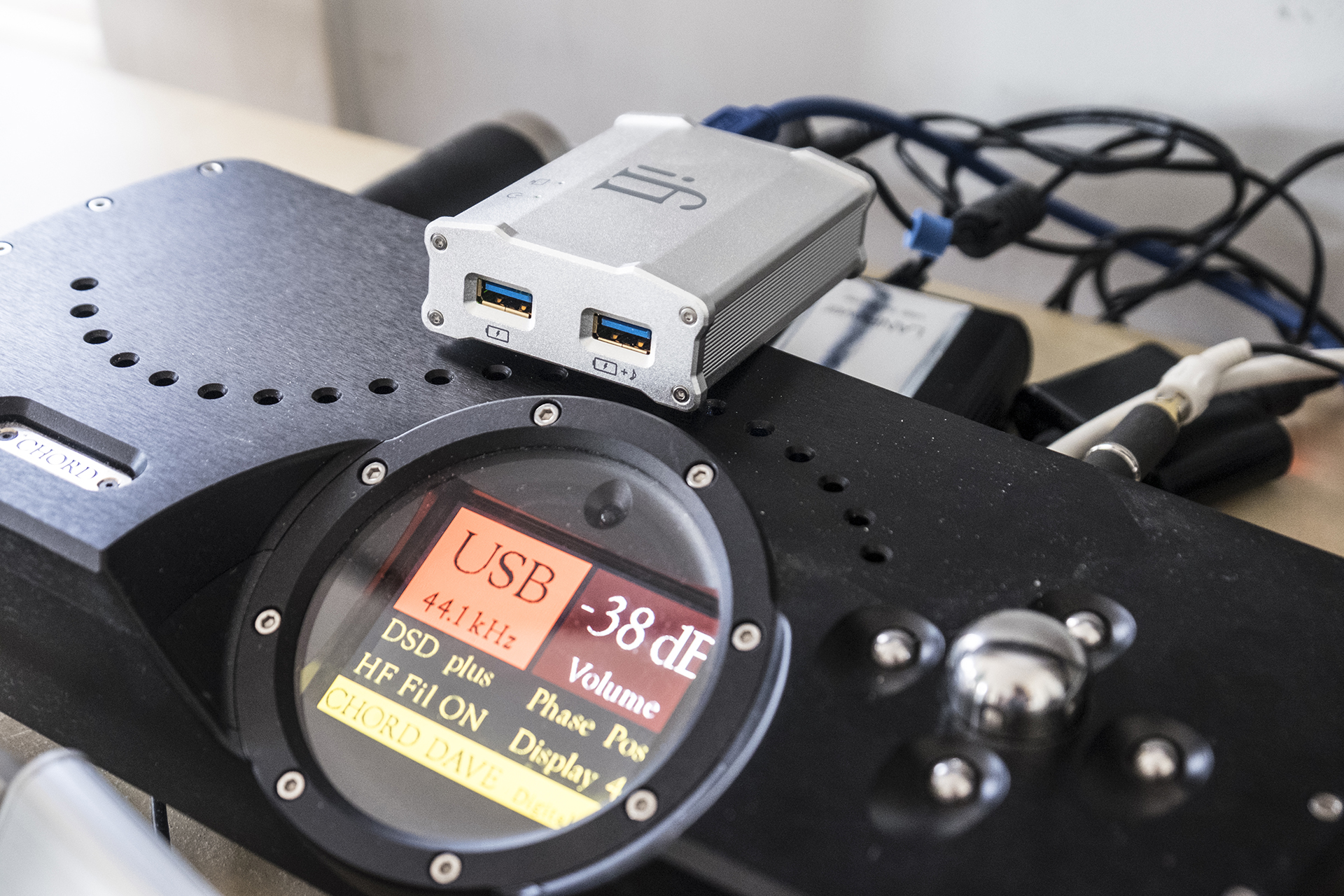


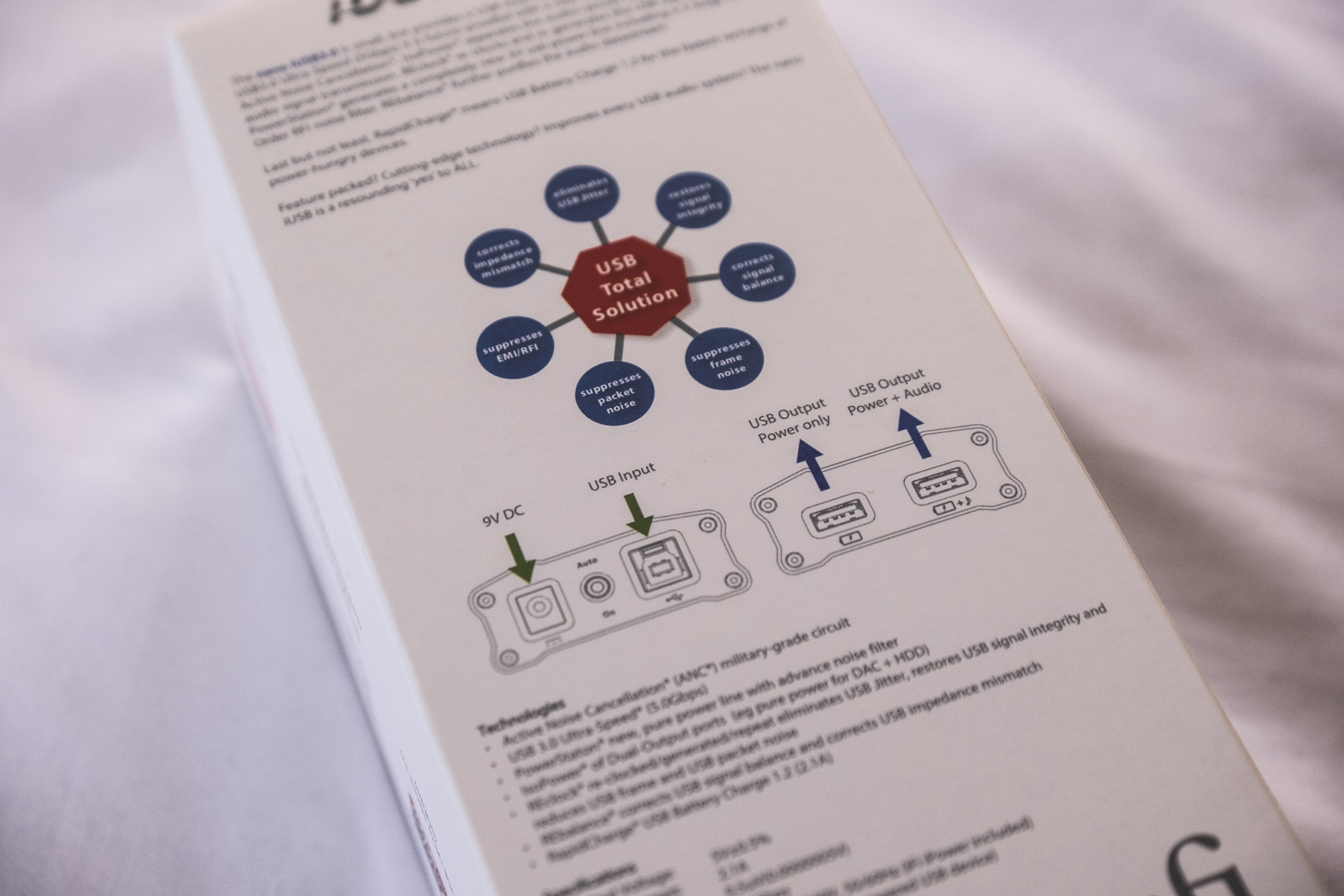
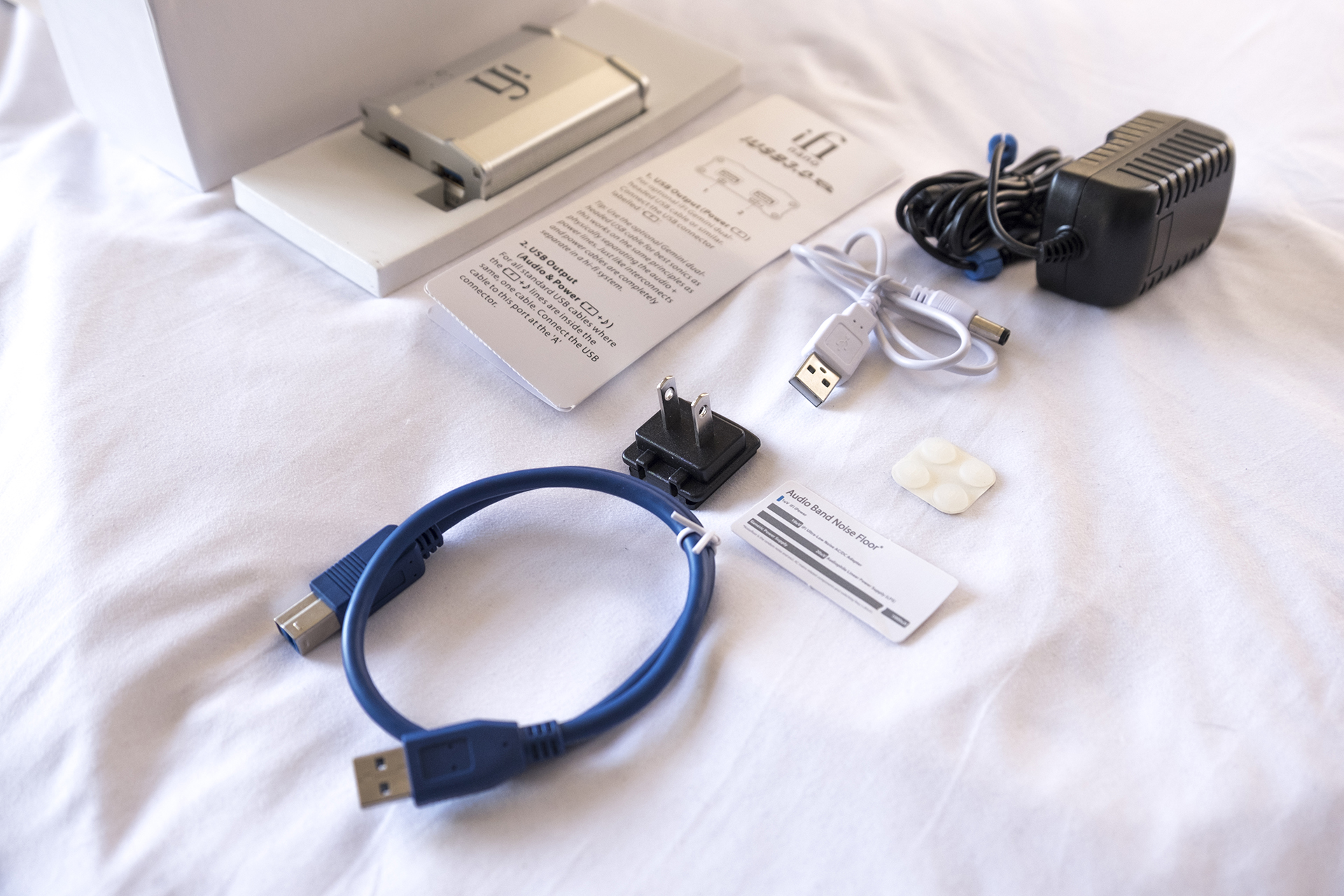

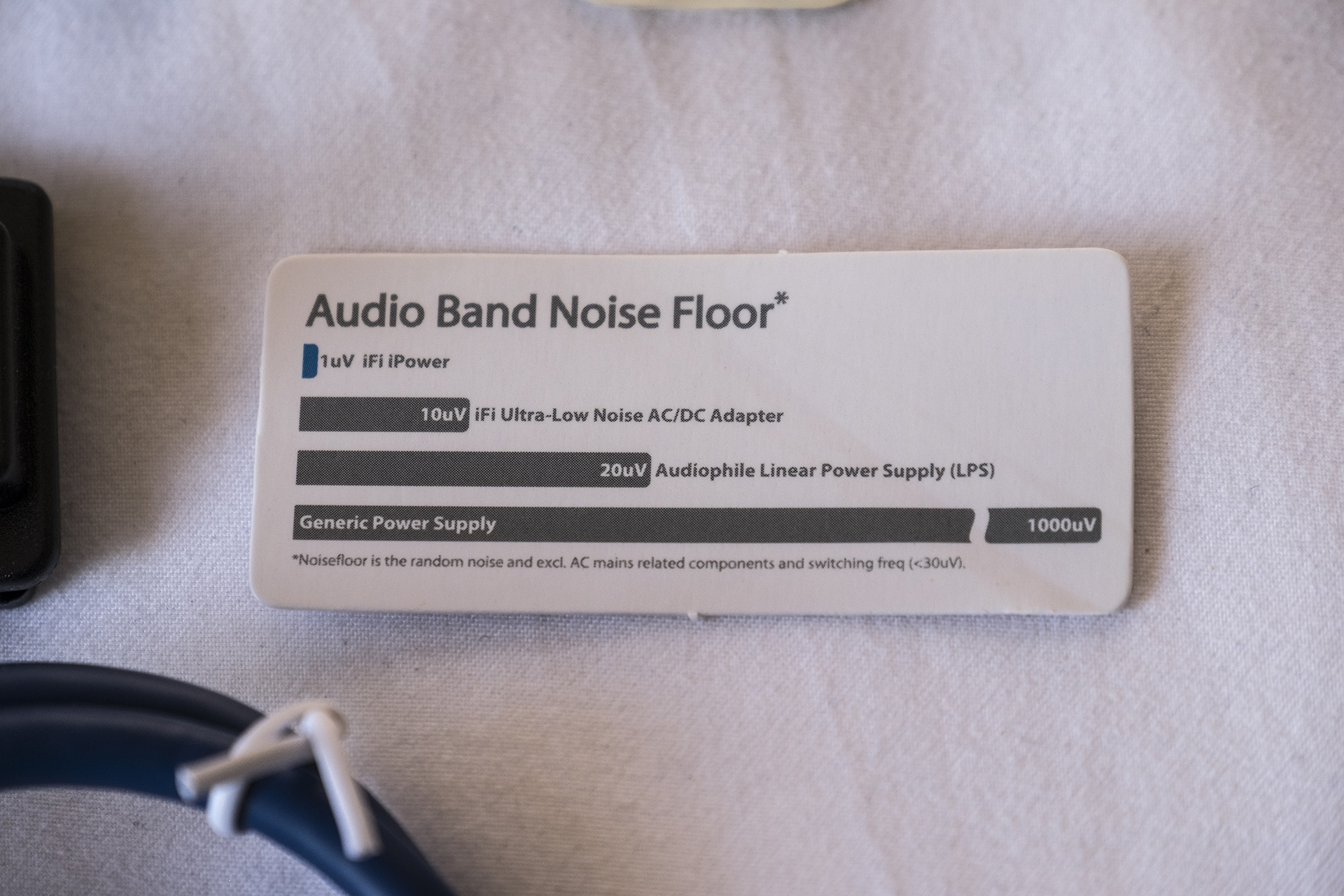
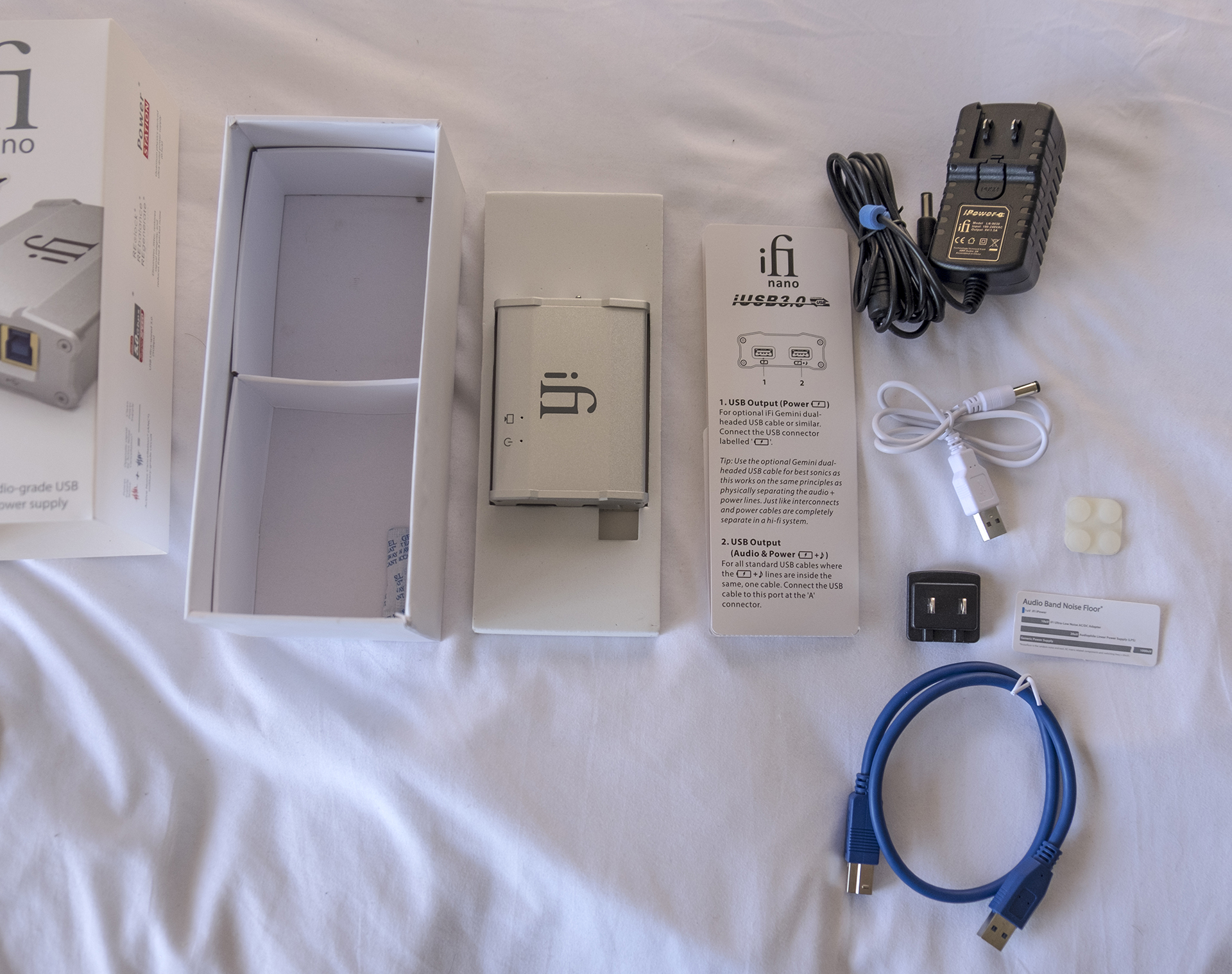
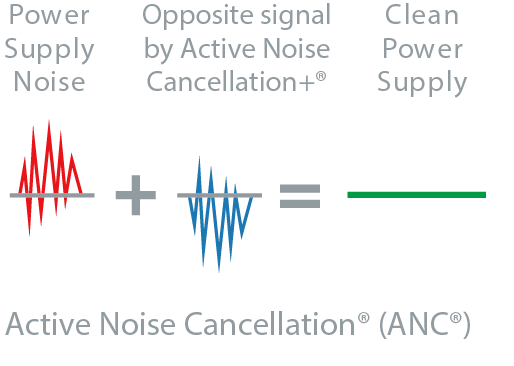
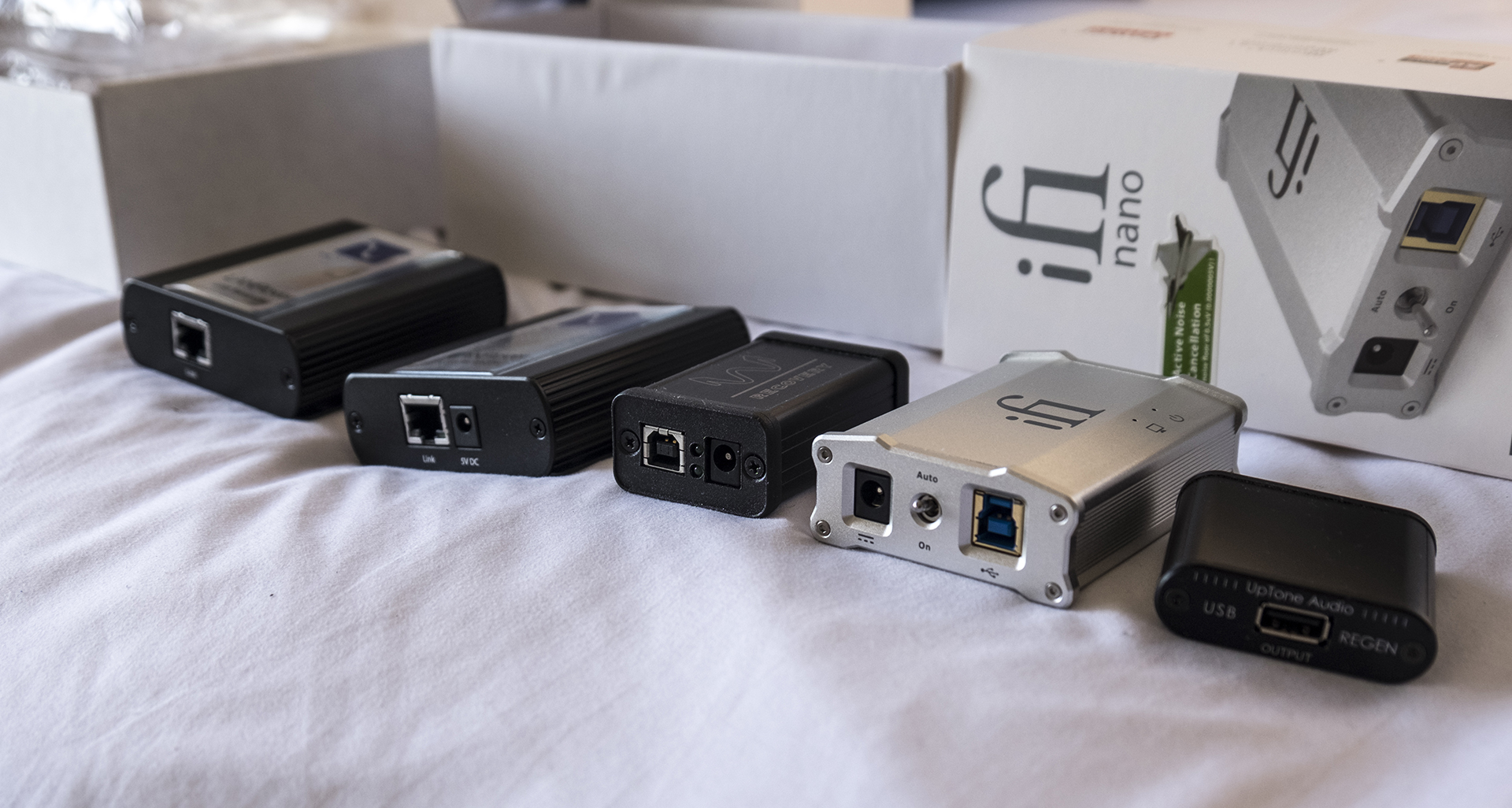
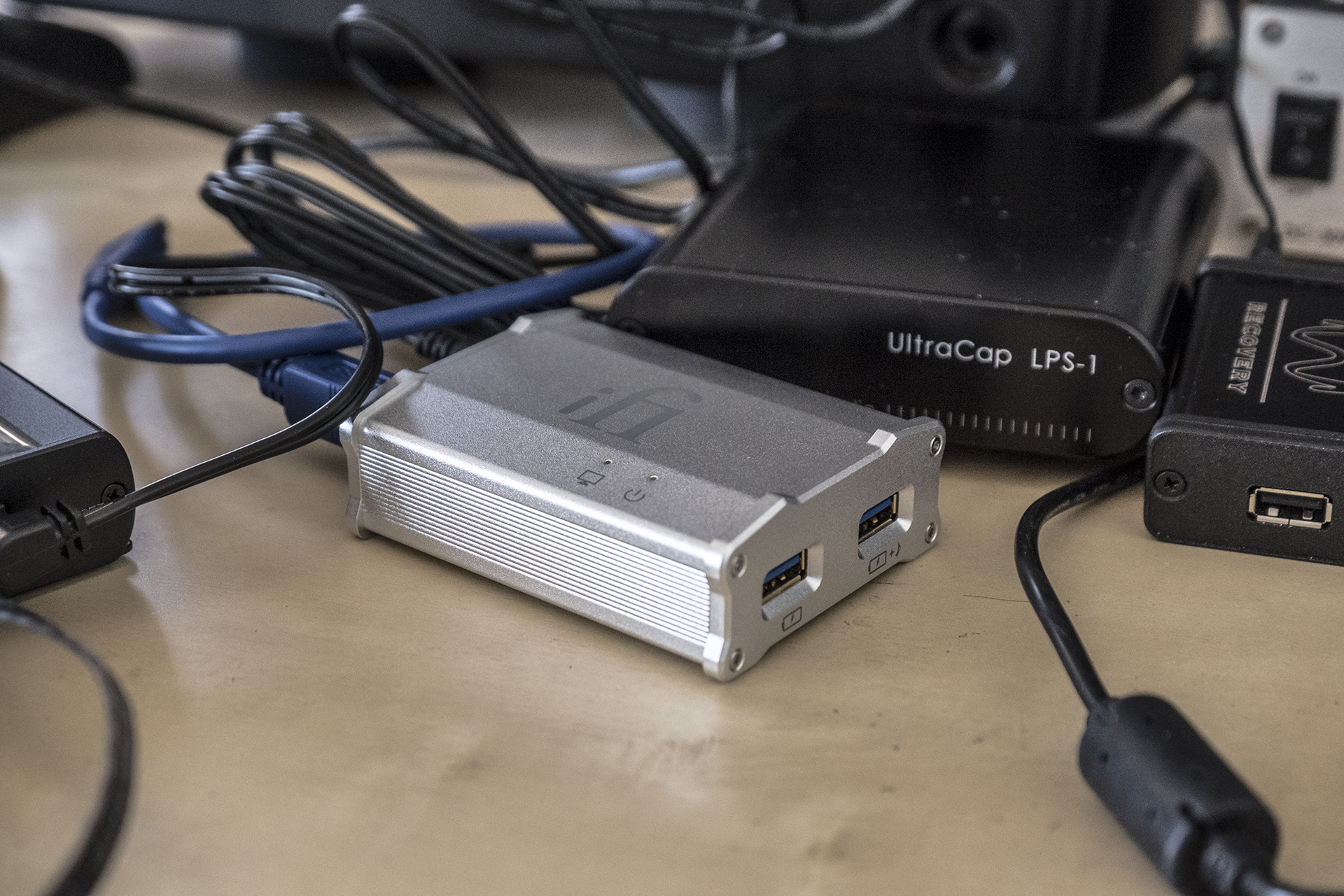



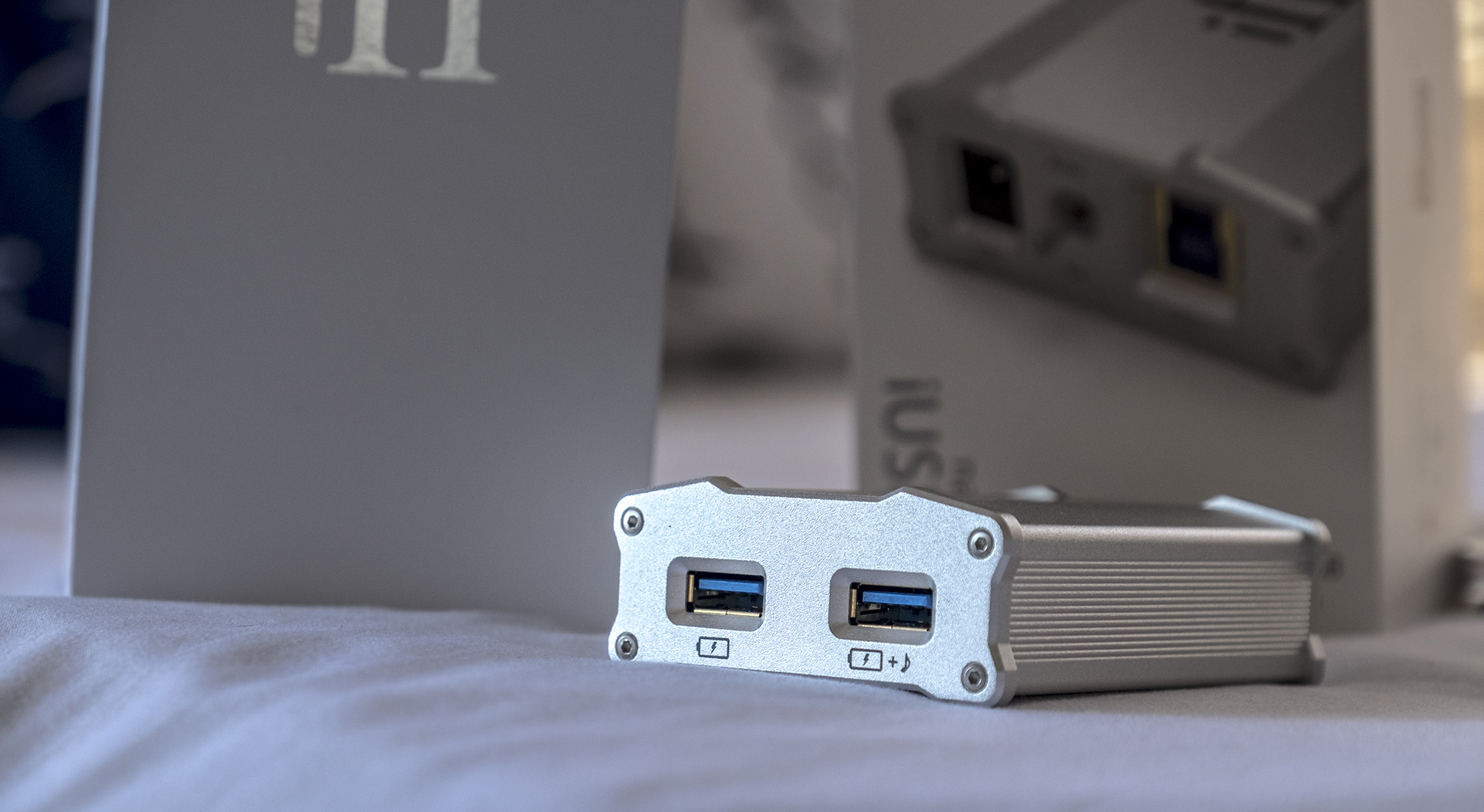



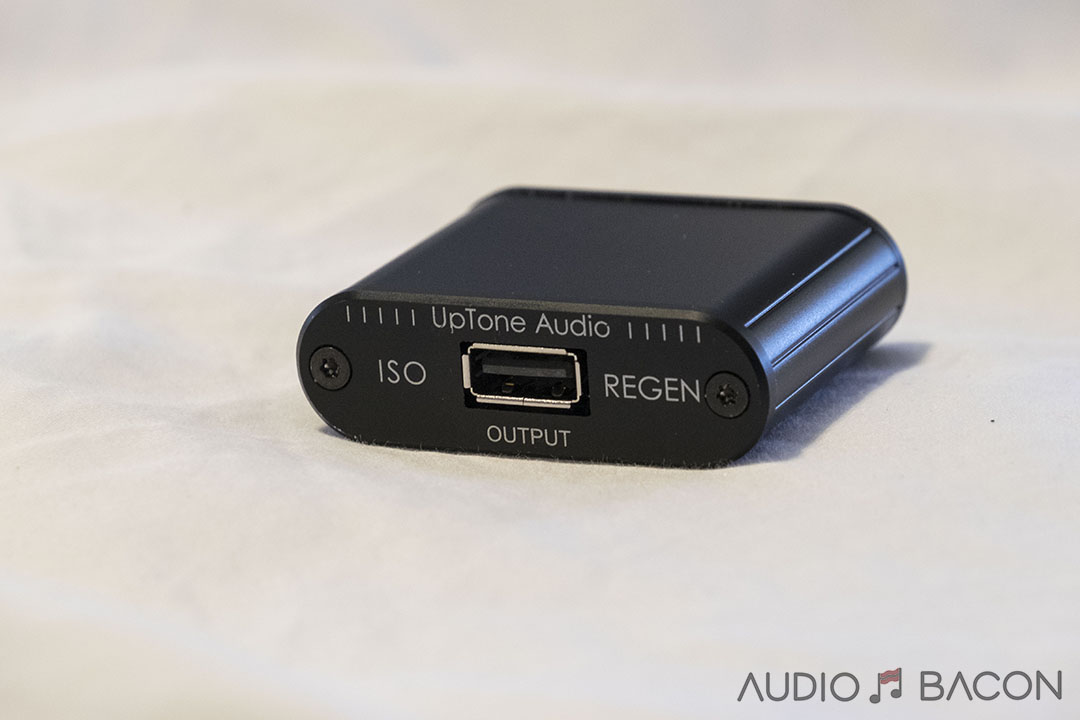
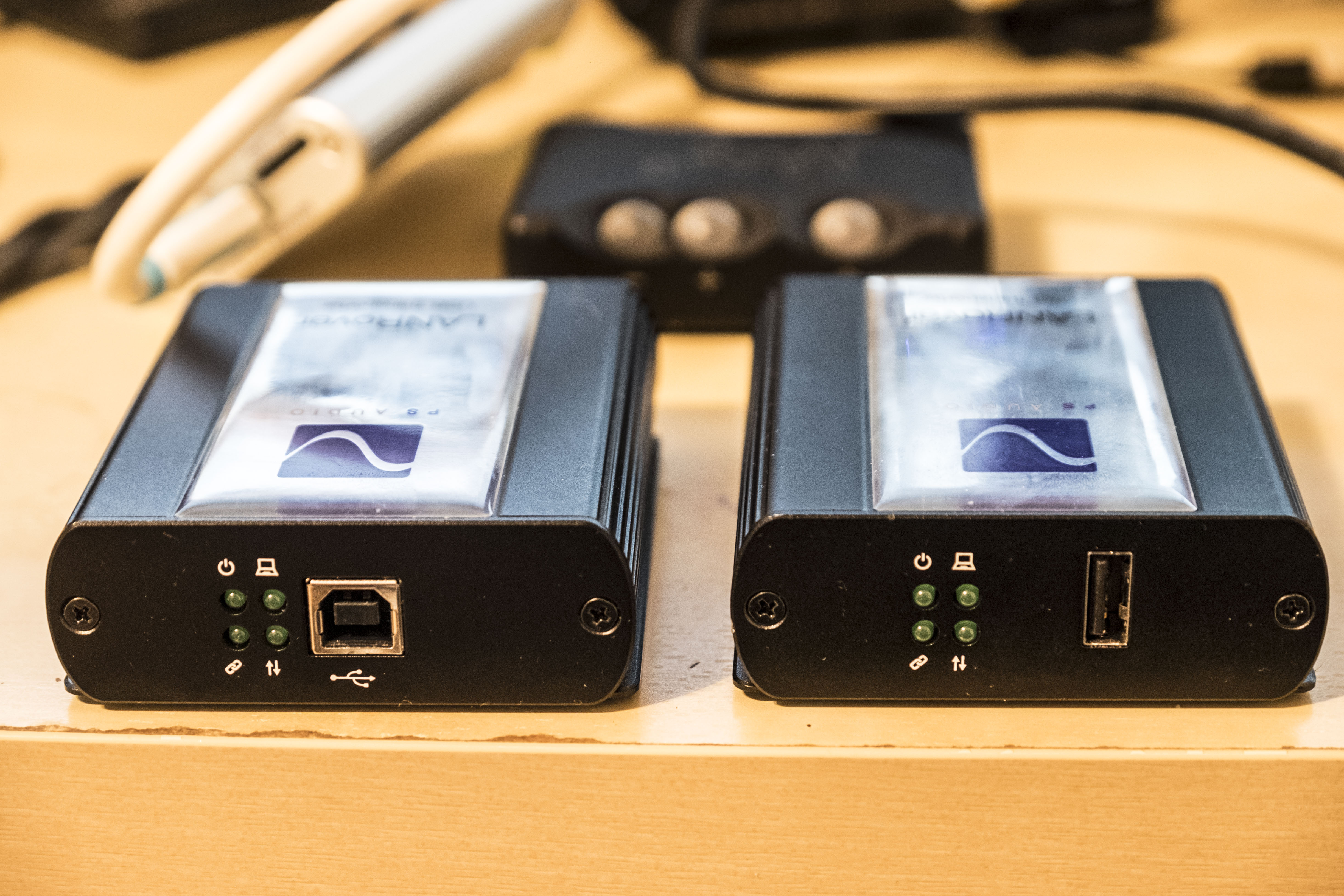

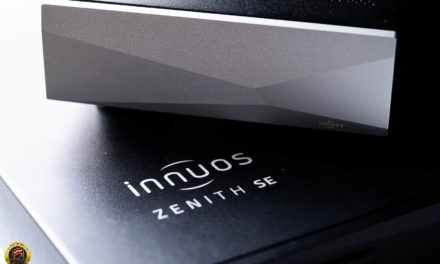

Hi There, I really enjoyed and learned alot from your write up. You mentioned in another article that stacking the uRendu and Lanrover was best of both worlds. Did you try stacking the iUSB3 and Lanrover and find a similar conclusion. Thanks
Unfortunately I didn’t try that combination. My guess is that it would’ve made the LANRover sound more holographic, more detailed, and definitely a darker background. When stacking these conditioners, I find that the sound takes more of the character of conditioner used closest to the DAC.
I am confused with your comment about how without a USB conditioner connected to the DAVE you lost:
Richness
Body
Dynamics
Clarity/Resolution/Sharpness
But in your Chord Dave Review you did not hear a difference when you used the Uptone Regen and the W4S Recovery.
Which USB conditioner did remove to lose the richness, body etc? I have a DAVE and I’m interested if it’s worth getting a conditioner.
Thanks
Very good catch! I remember testing the conditioners quite thoroughly during the DAVE experiment. I really didn’t hear a difference.
I actually thought I addressed in the LANRover review but I guess I missed it. During the testing with the DAVE, I didn’t hear a difference with the Regen/Recovery. Both using the TeraDak DC-30W power supply and the stock (cheap) DAVE USB cable. In this case, I used a Chord SilverPlus and their STOCK power supplies and heard a discernible difference. Unfortunately I’ve don’t have all the pieces here to reaffirm but thought I would mention this. After spending so much time with these conditioners, I believe I will have to retract that statement and say that a USB conditioner would improve the sound of the DAVE.
Hi,
I’m trying to connect PS Audio LAN Rover with MicroRendu. How did you connect the two? Best I can figure is to connect LAN Rover after mrendu. Could you shed some light on this? Would you lose benefits of mrendu and lps1 if LanRover after it?
I connected it directly after the mR. Not sure how you would connect otherwise since there’s no USB input on the mR from the LANRover (unless I’m missing something here). Personally I don’t think you lose the benefits at all. The LANRover just smooths out the sound. Some will prefer with or without the LANRover. I eventually just stuck with just the mR for a more energetic presentation.
Thanks. I’ll give it a try. Maybe I’ll add a lps-1 to power the LAN Rover.
Great article. Was contemplating either the ifi or the w4s to pair with my mojo so this was right up my street!
Question…the comment at the end re the usb adaptors, are you saying I’m better off using the usb a to micro cable supplied with the mojo to pair my mojo to my tablet as opposed to the chord Silverscreen usb a to b cable and an audioquest b to micro b adaptor?
Kind regards,
Thanks Anthony! The purpose of the adapters is to keep the distance between the DAC and server as short as possible (more of a direct connection). From my experience however, some adapters sound worse than using a cable so that’s something to keep in mind. I would try both combinations and see what you prefer. My guess would be the SilverPlus + Audioquest being the better combination as the stock Mojo cable isn’t optimal.
Thank you Jay for a great review, I read it over and over with pleasure. Although currently using w4s RUR and ifi iPurifier 2 between audioPC and DAC, I’ve decided to try the iFi Nano iUSB3.0 as an upgrade to the setup. In a week when it artives I’ll find out how it can improve my already satisfying SQ.
Good to hear from you Thuan! Glad you liked the review. Please let me know your thoughts once you’ve tried the Nano! Which DAC are you running?
Hi Jay,
I’m using B.M.C. PureDAC mk2. I hope the current balance of warmth and resolution which I’ve been happy with will be preserved if not improve further after the Nano USB 3.0 landes. I guess it also depends on the rest of the audio chain.
Dear Jay,
The Nano USB arrived today and it immediately replaced the RUR/iPurifier2 tandem team. Initial impressions are: you’re spot on about the Nano’s contributions to the SQ. While letting the Nano burn in for at least a dozen hours more, I’ve already enjoyed its “holographic, x-ray into the music, separation, black background”. I’ve also noticed the decreased (not lack of) warmth and increase in treble energy the Nano iUSB3.0 is bringing to my setup, seemingly making it unforgiving to some recordings.
Hey Thuan! Yeah, I think with the Nano iUSB3.0, you might need something warmer in the chain but it’s amazing what this thing could extract from your music. In any case, I could see how some would be completely happy with its performance. It’s the blackest background I’ve ever heard on any USB conditioner ever.
I’m anticipating iFi Audio release of the iGalvanic3.0 which hopefully complements the Nano iUSB in tonality and richness. For the time being, I’m really impressed and appreciative of the Nano’s detail extraction capability. Thanks again for a truly thorough and thoughtful review.
Hi Thanks for the review.
Wow everything changes so fast….
OK Want to optimise my new headphone rig – Questyle 600i, so it has its own DAC. I could use my notebook and the ifi nano 3.0 – or Auralic Aries Mini and the ifi or am I better going the SOTM 200 route ? As I am over 60, my high frequencies are shot so I prefer something which emphasises the high frequencies.
many thanks for any guidance you can give !
Vincent
iFi products generally tilt towards the brighter side but never harsh. sMS-200 could also sound a bit lean but it’s generally smooth. You might do better with a microRendu + LPS-1 power supply TBH. I’ve never heard the Auralic Aries Mini so can’t comment on that.
Dear Jay et al,
I think its brightness is mostly due to lack of break-in, at least in my case. It takes about 40 days to come to its own. After the period, it retains all positives minus the extreme brightness I heard during the 1st 30 days. No, it didn’t suddenly become a warm and lush performer but it’s rather like a chameleon: it can sound breathy and reasonably lush and warm when the recordings call for, and vice versa. I’m very satisfied with its performance per dollar value and looking forward to the upcoming iGalvanic3.0.
Hi Jay,
It is a great review, and I learned a lot in a digital USB world from your article. I try to make a decision between nano iusb 3.0 and micro iusb 3.0. What is your thought? I’m connect the USB power my w4s dac2. Or using iusb connect to audiophileo2 and connecting to sp port.
Thanks,
Vincent